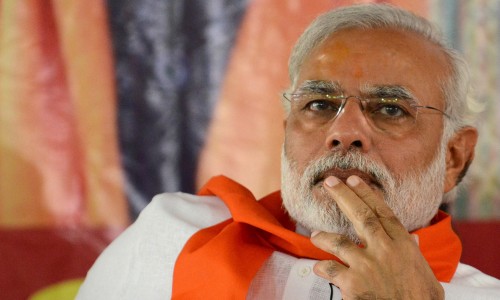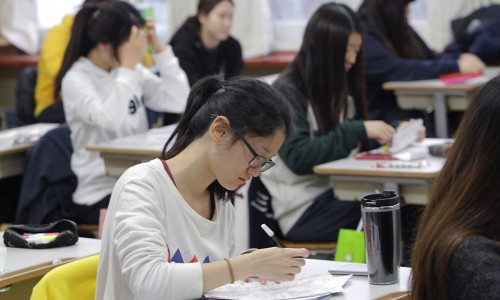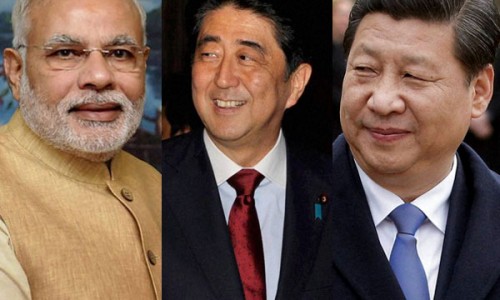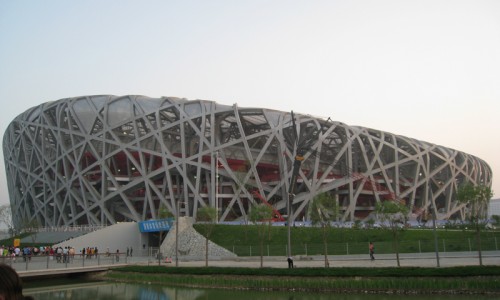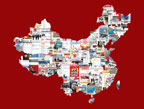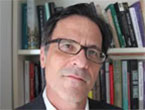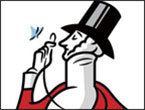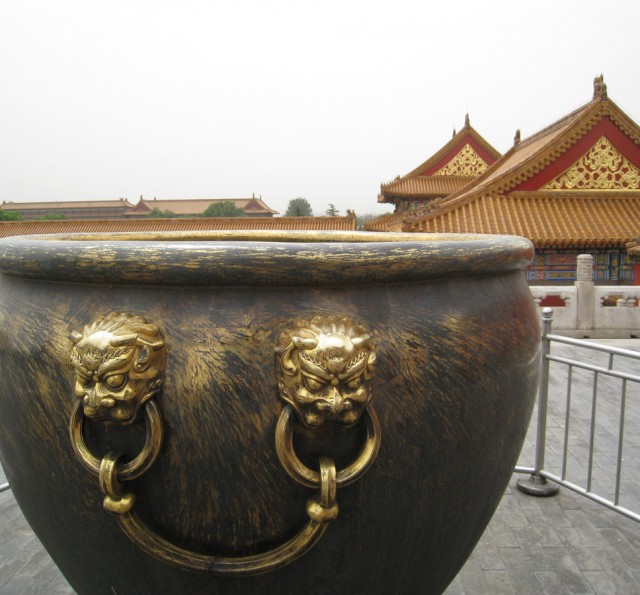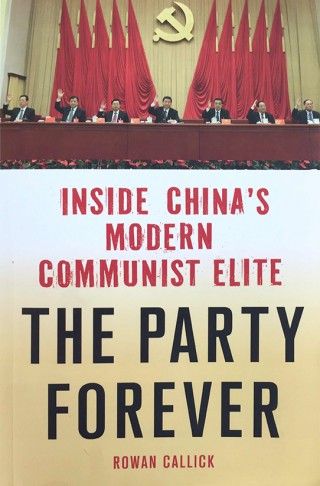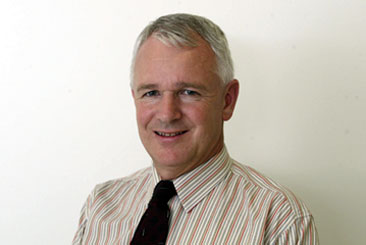Published on July-August 2010
Rowan Callick
Many Australian readers can list several great historians of World War II. Besides Winston Churchill himself, names in lights include A J P Taylor, Hugh Trevor-Roper, Alan Bullock, Ian Kershaw, Antony Beevor.
Their focus was or remains the war in Europe, with Hitler as the marketing key, the magnetically evil drawcard.
A few books about that same war in our part of the world, such as Peter FitzSimons’ big-selling Kokoda, and Peter Ryan’s Fear Drive My Feet – both set in PNG – have also captured many Australians’ imaginations.
These are all fascinating, not least in the latter case for what we learn about ourselves. But those encounters were with a Germany and Japan that have changed ineradicably.
Australians are mostly reasonably informed about the wars of the last century, even those fought in a remote continent. In comparison, what do we know about the framing of the most significant development of our day – the unremitting rise of China?
The country’s rulers constantly play on the unique continuum of China’s civilisation through millennia. History matters hugely. Speeches today are peppered with references to distant dynasties. Hundreds of millions of TV viewers tune in to long-running soaps set in the Qing or Ming eras.
Yet Australians appear today as mystified about China as ever, maybe even more so following the train of diplomatic and business rows this year during which our differences were highlighted.
We have mostly patched them up and re-emerged the other side as tentative pals again. But why does Beijing behave as it does? What drives China’s nationalist feelings, and its growing global reach? What does it mean, that China’s leaders work – and during most of the week, live – in Zhongnanhai, a huge compound immediately west of the Forbidden City, where emperors once held court?
The Australian education system provides little help. Tourism, and personal exchanges, offer a little more. But most people sense they’re at a standing start, intrigued but puzzled how to learn about this ancient, complex and vast land, 20 per cent bigger than Australia.
Don’t be dazzled by the thrusting steel and glass towers, or misled by the immense appetite for the new. More than for any other nation, it is impossible to make sense of China without knowing something of its persisting past.
Fortunately for readers in English we have a rapidly growing corpus of fine works on Chinese history. But the dean, the outstanding historian of China – and many peers in the US and Britain believe, the finest historian of our age on any subject – is Jonathan Spence, who has just slid into semi-retirement.
He continues to make sense of the present, and to foreshadow future patterns, through telling wonderful – and terrible – stories from China’s history.
Spence, an Englishman aged 72, began teaching at Yale University 44 years ago, and has been history professor there for most of that period.
His 15 books span the period from late Ming China, around 1600, to the mid 1980s.
A slim, bearded figure, he bears a passing resemblance to the only figure with whom he might be compared, in his mastery of such a massive field – adopted Australian Pierre Ryckmans, who writes, with extraordinary élan in English, his third language, as Simon Leys.
Spence’s books, unlike, unfortunately, some of Ryckmans’ masterworks, are all still in print. But Australians, bizarrely, may need some patience to obtain them. Besides “The Search for Modern China,” which is the core text, internationally, on late 19th and 20th century China, and which Australian publisher John Wiley thus keeps in stock, most will need to be imported.
This may indicate our failure to ask sufficient questions about China, our inadequate curiosity, beyond the price it will pay for our commodities. Such intellectual neglect will ultimately cost us dearly.
Susan Jakes, who now works on the China Beat web site, describes attending Spence’s History of Modern China lectures at Yale, whose largest auditorium had filled half an hour before the first lecture was scheduled to begin. Her account explains lucidly the dimensions of Spence’s appeal:
“A figure in a hooded coat slipped through the crowd toward the blackboard and began, silently, to fill it with a list of unfamiliar words written in slender uppercase letters. When he took the lectern, he made no sales-pitch to the assembled shoppers. He said only, ‘I’d like to start now’ and began a lecture he called, ‘Ten Things I Find Fascinating About China.’
“I’ve lost the notes I took that day – though I’m fairly certain the list included the Three Gorges Dam, the future of the one-child policy and the legacy of June 4 -but what has stuck with me, indelibly, is how quickly after Spence began to speak, I knew that anything he found fascinating was something I needed to hear more about.
“When the lecture ended, there was applause. I don’t how long it lasted because my roommate insisted we sprint to the bookstore a block away and buy the books for the course before they sold out. Which they did. Before we’d even left the store.
“Spence lectured three times a week that year, which meant he had about 40 lectures to span the period from just before the Manchu conquest to the present, or roughly a decade per each 50 minute class. The course moved chronologically, but it did so at what felt like an unhurried pace, with time for detours into art or literature.
“The lectures had the feel of finely crafted short stories, and at times full-length novels. They were beguilingly titled – ‘The View from Below,’ ‘All in the Translation,’ ‘Into the World,’ ‘Bombs and Pianos’ – and they built in intensity to end in startling revelations or quietly delivered lines of poetry.
“He always put individuals front and centre. No event worth mentioning was too large to be refracted through a single human life, and no life was too minor to have its humanity summoned up alongside its historical significance – the Kangxi Emperor advising a bondservant on his health, Ding Ling’s mother running around an athletic field on her newly unbound feet, a Boxer victim’s Steinway piano, Mao aboard his private train.
“He could ‘catch the essence,’ but he spoke casually, musingly, as if what he was saying was only dawning on him at the moment he said it. The effect was disarming. There was an open-endedness about the way he presented even the subjects he knew best, that invited us to feel a part of them
“Among some of my classmates this promise produced an almost instantaneous decision to reorient their studies or move to China. I came more hesitantly to the subject and the country, but I am sitting in Shanghai as I write this, quite as certain as one can be about historical causes and effect, that had I not found my way to that lecture hall, or if Spence had been lecturing on astrophysics or on Luxembourg, I would not be here.”
Spence has been loaded with honours by the American and British governments and academic worlds. He presented the BBC’s Reith Lectures last year – the model for the ABC’s Boyer Lectures – on the broad theme “Chinese Vistas.”
They were surprisingly disappointing, but this was the fault not of Spence but of the dumbed-down corporation, which reduced the talks to a few minutes in order to present often-odd questions from members of the audiences, who seemed to have been profiled as representative of a Beeb conceit of its world.
Some of Spence’s books – especially his magisterial “The Search for Modern China” – cover the great sweep of China’s history. Others, such as his most recent work, “Return to Dragon Mountain,” focus on a few exemplary figures whose experiences and writings throw light on a whole era. They include some intimate stories best described as detective non-fiction, others closer to tragic epics.
His Chinese name is Shi Jingqian – meaning “an historian who admires Sima Qian,” the archetypal Chinese historian who lived from about 145 to 86 BC.
Spence might be imagined as an English version of a Confucian scholar, a Renaissance man, whose interests and knowledge extend broadly, into unexpected and sometimes delightfully arcane areas. But like all great historians, he never lets the reader lose touch with the guiding narrative. He is a terrific story teller.
A colleague describes asking Spence, as they walked across the campus, what he was working on: “Jonathan’s eyes narrowed, as though he were looking into the distance. ‘I’ve discovered a marvellous source,’ he murmured. ‘About the murder of a woman named Wang: a body crumpled in the snow.’ ”
Later, his book The Question of Hu grew from Spence’s discovery of a hapless man from Foshan in China locked up like a lunatic in the asylum at Charenton in early 18th century France, shortly before the Marquis de Sade was also incarcerated there.
Of all the characters who crowd his books, the figure with whom he most clearly exhibits fellow-feeling is Zhang Dai, the historian of the Ming dynasty and of his own extraordinary family, the hero of “Dragon Mountain.”
Zhang describes a boat outing on Hangzhou’s exquisite West Lake, in the 1620s. China has an ancient saying, now transformed into a tourism marketing slogan: “Heaven is above, below are Suzhou and Hangzhou.”
Zhang writes, in Spence’s translation: “On the slopes of the hills, the house gates were all closed and people were sleeping deeply, one could not see the light from a single lamp. I laid out a clean mat in the boat so I could lie there and look at the moon; in the prow of the boat, one of my young companions began to chant a song.
“The drinking I had done blurred with the dream I was having, the sound of the song seemed to recede, the moon itself also seemed to grow paler… The boatman poled us back to the shore, beating out a rhythm with the pole to tell us it was time to go to bed. At that moment my mind was huge as the ocean… I could not grasp what this thing was that people call sorrow.”
In time, amid the dashed dreams and casual cruelty always triggered by the downfall of a dynasty – as the Ming were supplanted by the Qing, the Manchus swept in from the north-east, from beyond beyond the Wall, beyond the pale – Zhang was to grasp “this thing” only too clearly.
Spence generously acknowledges the work of other historians and writers in his books. But at their core, is immense original research of historical texts. And here he is a beneficiary of that Chinese continuity – its written language changed little for many centuries, until Mao Zedong introduced the “simplified” script that is now ubiquitous in the People’s Republic, and which may be on the verge of swamping traditional Chinese in Taiwan and Hong Kong too.
He also benefits from the immense store of original material that has survived even the invasions and civil wars of the 20th century. He draws, in his biography of the great Qing Emperor Kangxi, on the annotations the emperor made himself, in the vermillion ink only he could use, to communications from provincial governors, generals, and other officials.
This correspondence reveals much about the emperors – such as the instruction, written alongside information about the latest state of a regional silk market: “I don’t want to hear about silk! Your daughter is ill, focus your energies on helping her to recover.” The Palace Museum in Taipei, which contains many of the greatest treasures from the imperial Forbidden City, frequently displays selections of these letters.
Spence’s books combine history with literature. They refrain from moralising. Spence says in a long interview with Lu Hanchao for the Chinese Historical Review: “I try to let the structure of the work create the moral environment.”
He believes that “a kind of overstatement of a theoretical approach is somehow limiting… Simply to impose a social science analysis would not be appropriate, whatever it might be – whether it is deconstructional, or post-colonial, or post-modernist, or subaltern studies, or the ‘public sphere.’ Most of these are already passing us by… they are quite fleeting.”
His goal, he says, is “simply to encourage people to want to know more about China.” He wants the reader to think: “This is a really complex and interesting society. There are things here we haven’t thought about.”
Spence says: “We need to let the Chinese tell us their story; we shouldn’t be telling them what to tell us all the time.”
The books:
Ts’ao Yin and the K’ang-hsi Emperor: Bondservant and Master (Yale University Press/New Haven, 1966)
The story and milieu of Ts’ao Yin, hereditary bond-servant of the Manchu/Qing emperors who had enslaved his great-grandfather. His own great-grandson wrote China’s most famous novel, Dream of the Red Chamber.
To Change China: Western Advisors in China, 1620-1960 (Little, Brown 1969, Penguin 1980)
Out of hundreds of colourful candidates. Spence selected 16, who he says, despite the range of their expertise, “bared their own souls and mirrored their own societies in their actions, yet in so doing highlighted fundamental Chinese values… and speak to us still about the ambiguities of superiority, and about that indefinable realm where altruism and exploitation meet.” They range from the Jesuit pioneer Adam Schall to General “Chinese” Gordon to the Comintern agent Mikhail Borodin and the American General “Vinegar” Joe Stilwell.
Emperor of China: Self-Portrait of K’ang-hsi (Alfred A Knopf 1974, Vintage 1988)
Spence translates the original words of Kangxi (1661-1722) as his name is now represented, who is viewed as one of the greatest of the emperors. He brilliantly knits them together to form an autobiography that addresses us in a remarkably personal manner.
The Death of Woman Wang (Viking 1978, Penguin 1979)
The location: a corner of Shandong province from 1668-72. The actors: farming families responding to a series of crises, including “the decision of a woman named Wang, who was unwilling any longer to face an unacceptable present and chose to run away from her home and husband.” In the context of big h History, Spence writes, these crises were small, “to the people involved they were of absolute, fatal importance.”
The Gate of Heavenly Peace: The Chinese and Their Revolution (Viking, 1981, Penguin 1982)
Spence sets the scene for Mao Zedong’s declaration of the People’s Republic in 1949 by tracing China’s revolutionary ideas, and the people who promulgated them, including Lu Xun, Ding Ling, Hu Shi, Chen Duxiu and Li Dazhao, focusing on the period from 1895 through to the late 1930s.
The Memory Palace of Matteo Ricci (Viking 1984, Penguin 1985)
The Italian Jesuit Matteo Ricci (1552-1610) was the first Westerner to be permitted to live in Beijing. Spence compares Ricci’s two worlds: Counter-Reformation Europe and Ming China, “his classical past and his Chinese present.” The book’s centrepiece is Spence’s recreation of the “memory palaces” created by Ricci – by which he used imagined buildings, their rooms and contents, to remember vast amounts of information, including the scriptures and Chinese characters.
The Question of Hu (Vintage 1988)
The story of John Hu, a widower from Canton (Guangzhou) and convert to Catholicism whom French Jesuit Jean-Francois Foucquet engaged as his translator and assistant, before in 1722 bringing him back with him to France. Foucquet had set out to prove that Chinese religious texts were inspired by the Christian God. Hu began behaving bizarrely on the voyage over, and was eventually confined for two years in the lunatic asylum of Charenton, where the Marquis de Sade was later incarcerated. Spence uses French, British and Vatican archives to construct an imaginary log.
The Search for Modern China (W W Norton 1990)
Spence’s magnum opus, the 876 page essential history, from the late Ming around 1600 through to the massacre in and around Tiananmen Square in 1989, with great illustrations and maps. “The history of China,” Spence writes enticingly, “is as rich and strange as that of any country on earth, and its destiny as a nation is now entwined with all others in the search for scarce resources, the exchange of goods and the expansion of knowledge… There is no easy way to understand China, any more than there is an easy way to understand any culture, or even to understand ourselves. But the attempt is worth making…” The book’s closing words still hang in the air: “There would be no truly modern China until the people were given back their voices.”
Chinese Roundabout: Essays in History and Culture (W W Norton, 1992)
Here Spence has collected his own favourite essays, about Chinese and Westerners who tried to cross over into each other’s cultures, about Confucian theory and state power, about Chinese social history, about revolutionary China, and about spence’s own teachers and mentors – Arthur Wright, Arthur Waley, John Fairbank and Fang Chao-ying.
God’s Chinese Son: the Taiping Heavenly Kingdom of Hong Xiuquan (W W Norton 1996)
Probably the favourite work of Spence’s admirers. The Taiping rebellion of 1845-64 led by Hong Xiuquan, a failed Confucian scholar who believed himself to be Jesus’ younger brother, was the bloodiest war ever fought anywhere, leaving more than 20 million dead. The Taiping Heavenly Army seized the great city of Nanjing in 1853, established their New Jerusalem there, and came extraordinarily close to replacing the Qing emperors with Jesus’ Chinese dynasty. This story helps explain Beijing’s over-the-top attitude to the Falun Gong movement.
The Chinese Century: A Photographic History of the Last Hundred Years (Random House 1996)
This large-format book with great black and white pictures, co-authored with Spence’s wife Annping Chin, provides an alluring introduction to China’s tumultuous 20th century. The opening photo, of people gripping paper umbrellas crossing an ancient suspension foot bridge across a chasm between Tibet and the rest of China as the century opened, under lowering skies, sets the scene. Later, come Mao Zedong and Zhou Enlai in Yenan just after the Long March, a cocky couple with long hair and sideboards and peasant garb, looking oddly like members of Bob Dylan’s one time sidesmen The Band playing outlaws in a gritty home movie.
The Chan’s Great Continent: China in Western Minds (W W Norton 1998)
“One aspect of a country’s greatness,” writes Spence, “is surely its capacity to attract and retain the attention of others.” What he describes as “the sharpness of the feelings aroused by China in the West” appears as potent in Australia today as a century ago. His subjects, most of them writers, start naturally with Marco Polo and include Mark Twain, Ezra Pound, Eugene O’Neill, Franz Kafka, Bertolt Brecht, Jorge Luis Borges and Italo Calvino.
Mao (Viking 1999)
A 205-page canter through the life of the focal hero-monster of China’s 20th century, published in a series of “Lives” of figures ancient and modern. An important goal of Spence’s biography is “to show how Mao was able to rise so high, and sustain his eccentric flight for so long,” finally by adopting the mediaeval European role of a “Lord of Misrule” during the Cultural Revolution.
Treason by the Book (Viking 2001)
The web of intrigue surrounding treacherous attempts to displace the third Qing emperor, Yongzheng. At its centre lie the extraordinary direct exchanges between Yongzheng and the central conspirator, Zeng Jing, an aspiring scholarwho lived in Hunan in central China in the first part of the 18th century. It is a book about the power of rumour, about the imperial aspiration – no less resolute today – to control minds as well as deeds, and about the distance between a provincial village and the emperor’s court, “like the moon.”
Return to Dragon Mountain: Memories of a Late Ming Man (Viking 2007)
The world, especially the family, and the writings of Zhang Dai (1597-1680), who lived in the city of Shaoxing, south-west of Shanghai. Like many wealthy families, they had not long shifted from the countryside where they had been managerial landlords, as the population boomed and returns from farming diminished, per head. Aged 47, Zhang “had to face the harsh reality that the glorious Ming dynasty, in whose shelter he had lived so grandly, had sputtered out to an ignominious end, torn by competing forces of violence, ambition, desperation and greed.”
Break-out ends

